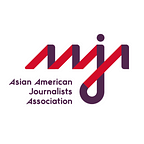Remembering Vincent Chin: “How are Asian Americans one people?”
Read Aneri Pattani’s 2015 winning essay for the Vincent Chin Memorial Scholarship
By Aneri Pattani, 2015 Vincent Chin Memorial Scholarship Recipient
Aneri Pattani was the 2015 recipient of the Vincent Chin Memorial Scholarship. Below is her winning essay. As the 40th anniversary of the murder of Vincent Chin draws closer, we wanted to share some of these essays here on Defined for the first time, as our way of uplifting Vincent Chin’s memory and keeping his legacy alive.
Pattani says: “I’ve been an AAJA member for about eight years now, and in that time, this community has taught me so much — about journalism, about giving back, and about supporting one another. It’s odd (and wonderful) to look back at this essay I wrote in 2015, and remember a time when all this was new. I was learning about Vincent Chin and the pan-Asian American movement for the first time, and just beginning to understand AAJA as an organization. I hope AAJA continues to provide a path like this for other young journalists.”
In 1982, a Chinese American man was bludgeoned to death. He suffered severe wounds on his head after being struck repeatedly by two men using a baseball bat. His crime? Being mistaken for Japanese. The perpetrators walked free with a minuscule $3,000 fine, since they had a certain status in society — that of well-employed white men. Yet the outcry to this attack did not come from the Chinese or the Japanese alone. The attack on Vincent Chin saw a response from the entire Asian American community. It brought to light a pan-Asian consciousness that had developed over years in the United States due to the racist tendencies of many Caucasians and the fact that many Asian cultures share similar beliefs.
As is often the case throughout history, it was the discrimination and oppression of distinct Asian groups as one minority group that brought them together as one people. While Asians saw marked differences between Chinese, Japanese, Korean, Vietnamese, and countless other nationalities, the rest of America often viewed them simply as Asian immigrants. As such, they were targeted as one group.
The attack on Vincent Chin saw a response from the entire Asian American community.
This is clear when examining the case of Vincent Chin. Although he was Chinese, he faced an attack motivated by racism against the Japanese. This was not the first time an Asian people confronted discrimination across all nationalities. When Chinese immigrants were dominating the railroad building job market in the mid-1800s, they were not the only ones to feel the backlash. In 1884, an amendment to the Chinese Exclusion Act made it so that anyone with Chinese ancestry, regardless of their current nationality, was barred from immigrating to the United States. In this way, the American public persecuted Asians as one group.
In facing this unified threat, Asians became a unified people. Since the prejudiced public saw them as one, they fought for their rights together. Thus, the Asian American movement came into existence. For instance, members of Asian descent created the Asian American Political Alliance in Berkeley in 1968 and they fought for the introduction of ethnic culture courses in universities. The oppression they faced served as a unifying force.
Life in the United States also made it easier for Asians to bond together because their differences with each other seemed much smaller when compared to their collective differences with many Westerners in the country. While the Chinese and Japanese fought for years in their homelands and focused on their differences, when they came to America, there was a certain acknowledgement of shared values, at least compared to Americans and Europeans. The same goes for people of other Asian nationalities. They all shared a collectivist culture that was starkly different from that of Westerners.
In facing this unified threat, Asians became a unified people.
Asians often emphasize the importance of being selfless, doing what is best for society, respecting your elders, and being flexible and accommodating for others. In contrast, Western cultures emphasize individualism, following one’s own path regardless of others, and challenging old beliefs. This juxtaposition made it easier for Asians to unite. In the face of such a different culture, they were able to find their own similarities. This pattern held true in terms of religion as well. While Buddhism, Hinduism, Jainism, and many other Eastern religions differ in their exact scriptures, many share ideas of nonviolence, rebirth, and spiritual balance. They diverge far more from the Christian ideas of the Holy Trinity, communion, and heaven versus hell than they do from each other. As such, Asians were able to form alliances in the United States, where they were more similar to each other than any other ethnic group.
Thus, the Vincent Chin incident did not suddenly bring together distinct groups of Asians. It merely reflected a process that had long been taking shape. It showed how Asians united to confront the oppression and racism heaped on them collectively and learned to recognize their similarities in the face of greater diversity in the United States.
Liked this piece? Leave claps and share on socials. Be sure to follow AAJA Defined as we continue to chat with AAPI journalists and share their stories.
Aneri Pattani is a national correspondent with Kaiser Health News, based in Raleigh, North Carolina. Find her on Twitter @aneripattani.
